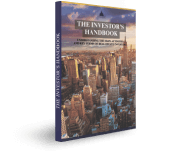Investing your first $1000 and letting it grow is an important step in building long-term wealth. But where do you start as a beginner investor? This article will provide actionable tips for investing $1000 based on proven strategies.
Understand Returns vs Risk
When investing any sum of money, you’ll want to consider the potential returns versus the risk involved. Typically, opportunities with higher potential returns carry more risk. For a first investment of $1000, many experts recommend lower and moderate risk options, which protect your capital while you learn.
For example, an established “blue chip” company like Apple is considered lower risk but may see slower growth. A newer company like Tesla is higher risk but could see explosive growth. As you gain experience, you can add higher risk, higher potential reward investments to your portfolio.
Choose an Investment Account
The first step is choosing where you will make the investments. Here are some of the most common options:
Brokerage Account
A brokerage account allows you to invest in stocks, bonds, mutual funds, ETFs, and more. Top brokers like Fidelity, Vanguard, and Charles Schwab offer accounts with no minimum balance. This gives you flexibility to invest your $1000 across different assets.
Retirement Account
Opening a retirement account like an IRA can help you save for the future while investing your money. Contributions grow tax-deferred. Options like a Roth IRA also offer tax-free growth and withdrawals in retirement. Retirement accounts require more research to avoid penalties on early withdrawals.
Robo-Advisor
Robo-advisor platforms like Betterment and Wealthfront invest your money into ETFs and index funds. You take a short quiz about your goals and risk tolerance. The robo-advisor then creates and manages a diversified portfolio on your behalf. Minimums to open an account are often $500 or less.
Define Your Investment Goals
Before choosing investment products, think about your reasons for investing this $1000. Are you saving for retirement several decades from now? Do you want to grow your money more quickly for a big purchase in a few years? Ensuring your investments match your goals will lead to better outcomes.
Long-term goals of 10 years or more are best suited for growth investments like stocks. Short-term goals call for very low-risk options like cash equivalents. There are many options in between for medium-term goals.
Click here to learn more and subscribe to the newsletter
Choose Investments with $1000
Here are smart options for investing $1000 based on your risk tolerance and goals:
Index Funds and ETFs
Index funds and ETFs (electronically traded funds) offer instant diversification. They track market indexes like the S&P 500, owning stocks or bonds from hundreds of companies. Top options for beginners are total US and total international stock market funds.
With just $1000, target a single broad index fund like VTI or VOO for US stocks. You can then add more funds as your investment account grows.
Target Date Retirement Fund
Target date funds provide a ready-made diversified portfolio in one fund. The fund holds a mix of stock and bond index funds selected for an expected retirement year. The mix automatically adjusts over time, becoming more conservative as the target date approaches.
A target date fund allows simple diversification into different asset classes with a single $1000 investment. Review fees carefully, as they may be higher than buying funds separately.
Robo-Advisor
As mentioned above, a robo-advisor account offers automated investing guidance. The provider will recommend and manage a portfolio matching your goals using ETFs and index funds. This simplifies investing $1000 on your own.
Carefully review account minimums and management fees. Features like automatic rebalancing can provide value for new investors without much capital.
Fixed Income Investments
Fixed income investments like bonds, CDs, money market funds, and savings accounts provide stable low-risk returns. Interest rates are low in the current market, so returns will be modest. However, they help preserve your initial investment.
Consider laddering CDs or Treasury bonds to boost interest income. With $1000, you can spread your capital across a few different maturities.
Individual Stocks
Investing in individual stocks is higher risk but allows for significant upside. With limited capital, focus on established large companies with consistent earnings and dividends.
Research past performance, financial metrics, and growth forecasts before investing in a stock. Consider dollar cost averaging over time rather than investing your full $1000 into one company all at once.
Real Estate Crowdfunding
Real estate crowdfunding platforms like Fundrise allow you to invest in real estate with minimal capital. You can buy shares of a real estate investment trust (REIT) that owns commercial or residential properties.
This gives exposure to real estate returns from rising property values and rental income. Review each crowdfunding platform’s fees, risks, and minimums to find the right fit.
Try your personal AI-powered Real Estate Advisor completely for free:
Avoid Common Mistakes
As a new investor, it’s important to avoid these common mistakes:
– Putting all your money in one investment
– Investing in unfamiliar, overly complex products
– Paying too much in fees and commissions
– Letting emotions drive investment decisions
– Cashing out investments too quickly
– Not reviewing investments regularly to adjust your strategy
Instead, create a balanced, diversified portfolio aligned to your goals. Understand what you are investing in and why. Manage your investments rationally over the long-term.
Start Small and Be Consistent
Investing your first $1000 is an exciting milestone. But more important than the amount is developing smart habits as you begin your investing journey:
Start small – Invest what you can afford to right now, even if it seems insignificant. Small amounts compound over time.
Invest regularly – Commit to adding to your investments consistently, like monthly or per paycheck. This builds discipline.
Hold long-term – Don’t panic and sell during market swings. Give your investments years to grow through ups and downs.
Review and adjust – Check in on your portfolio at least annually. Adjust based on performance or changes to your goals.
Increase contributions – As your savings and income rise, keep increasing how much you contribute to investments.
The key is getting started. Let your first $1000 investment be the foundation for growing your wealth and reaching your financial goals.
* This content is for informational purposes only and is not intended as financial or legal advice. Please consult with a professional advisor before making any investment decisions.
Are you interested in learning more about multifamily real estate investing? Our team of experienced professionals is here to help. Whether you’re looking for advice on conducting market research or need assistance in identifying the best investment opportunities, we have the knowledge and expertise to guide you through the process. Subscribe to our YouTube channel to access informative videos and expert discussions on multifamily real estate investing. Follow us on Instagram for inspiring visuals and exclusive content. Additionally, explore our comprehensive course on Udemy for detailed insights and strategies in multifamily real estate investing, designed to help you succeed. Check out our new customized ChatGPTs: Real Estate Investing Coach and Real Estate.
Ready to elevate your real estate investment journey? Contact us now to schedule a consultation and take the first step towards achieving your financial goals in the real estate and land development industry.


























